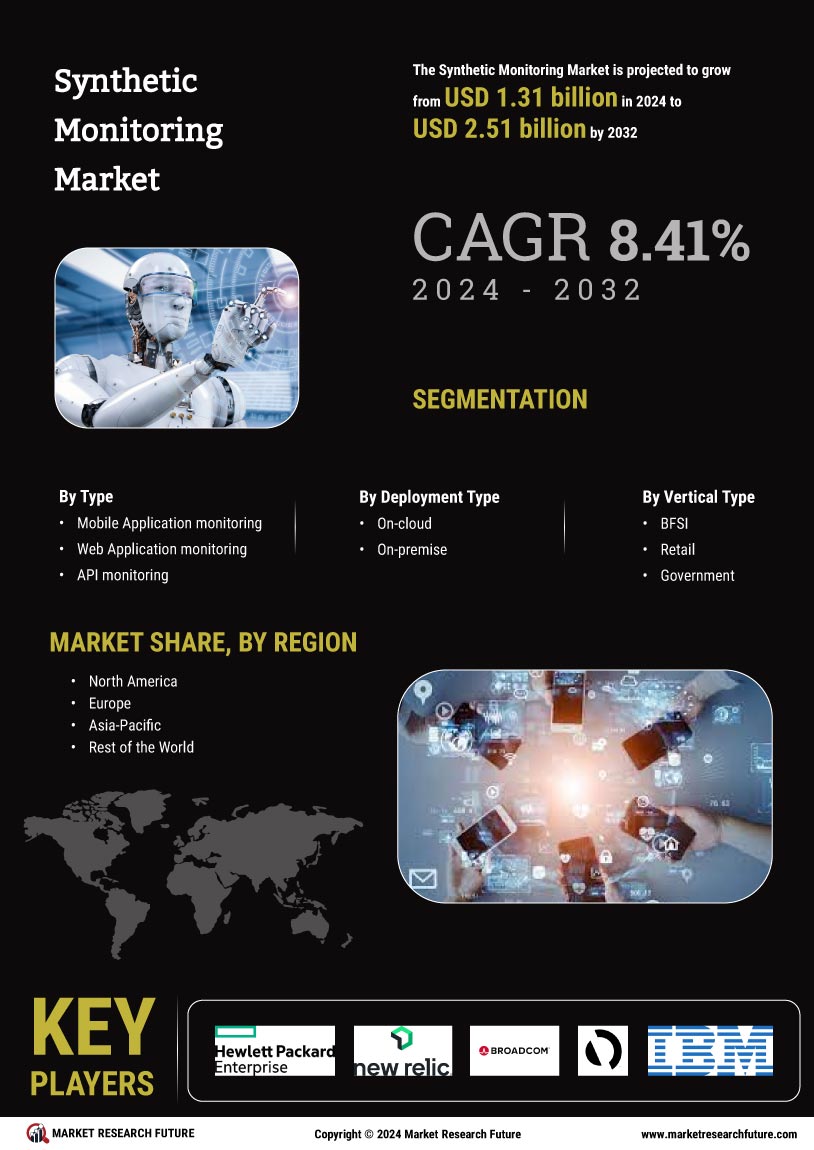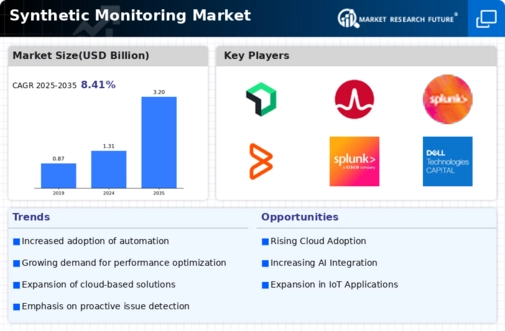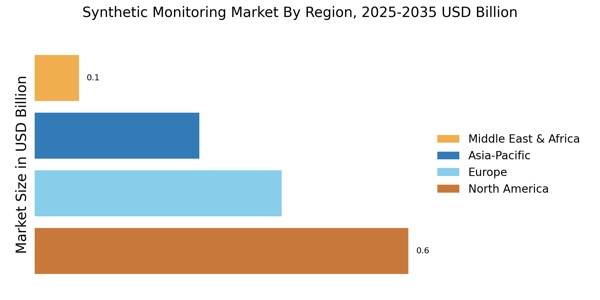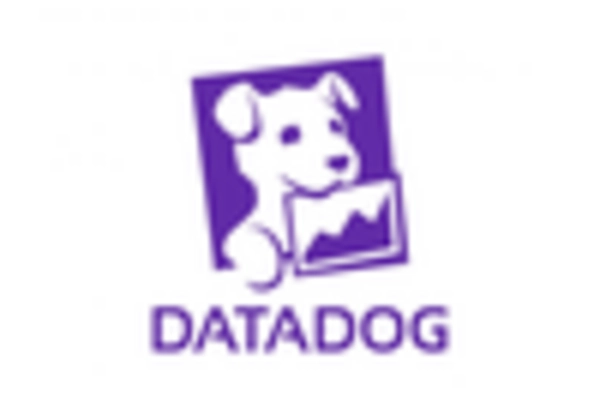Leading market companies are making significant R&D investments to diversify their product offerings, which will drive the Synthetic Monitoring Market's expansion. Important market developments include new product releases, contractual agreements, mergers and acquisitions, greater investments, and collaboration with other organizations. Market participants also engage in several strategic actions to increase their worldwide presence. The market for Synthetic Monitoring industry is becoming more competitive. Therefore, it needs to offer reasonably priced products to grow and thrive.
Manufacturing locally to reduce operating costs is one of the primary business strategies manufacturers employ in the worldwide Synthetic Monitoring industry to assist customers and expand the market sector. The market for Synthetic Monitoring industry has recently provided some of the most important benefits. Major players in the Synthetic Monitoring Market, including Broadcom Inc., Contentsquare, and others, are attempting to increase market demand by investing in research and development operations.
Broadcom Inc., a leader in worldwide technology, a Delaware corporation with headquarters in San Jose, California, creates, develops, and provides various semiconductor products and infrastructure software solutions. The crucial markets served by Broadcom's market-leading product range include data centers, networking, corporate software, broadband, wireless, storage, and industrial. Data center networking and storage, mainframe, enterprise, mainframe, and cyber security software emphasizing automation, monitoring, and security, smartphone components, telecoms, and factory automation are just a few of our offerings.
In December 2022, A new solution that lets businesses store their mainframe data wherever they want, including the Cloud, was made available by Broadcom Inc. With the help of Broadcom's CA 1 Flexible Storage solution, users may achieve significant cost savings and ransomware protection while storing mainframe data in safe, affordable mainframe solutions for hybrid IT environments.
The ability to make the digital world more human is delivered by Contentsquare. At every stage of the customer experience, our AI-powered platform offers comprehensive and contextual insight into consumer behaviors, feelings, and intent, empowering businesses to develop empathy and make a lasting impression. As the industry pioneer in digital experience analytics, Contentsquare supports brands in every industry in changing how they conduct business, enabling them to act on a large scale while fostering customer confidence through security, privacy, and accessibility.
More than 1000 top brands use Contentsquare to expand their businesses, increase consumer satisfaction, and act more quickly in a continuously changing market.
In September A new feature from Contentsquare has enabled companies to understand better how website speed affects user experience and conversion rates and adjust performance as necessary. The new Digital Experience Monitoring (DEM) solution from Contentsquare combines Real User Monitoring (RUM) and Speed Analysis Synthetic to provide brands with a thorough analysis of speed and user interaction, including Core Web Vital indicators.

















